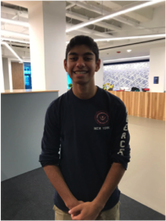|
By Colin Jun On October 10th, our school administrators proposed that we examine the way the club meeting time was working in our new schedule. This was due to concerns expressed by the students after the implementation of the flextime schedule. The new “Club Day” rotation system distributed every Flexi period during this year into four groups so that different Flexi periods would be provided to a broader range of clubs. Club Day 1 and Club Day 2 rotations will occur over a relatively regular club meeting schedule, while Club Day 3 and four rotations will provide a relatively flexible meeting schedule. In regards to Extended Learning and lunchtime, the school will now allow clubs granted the use of those periods for meetings and planning. However, during those periods, the clubs must have their meeting outside of the classroom, which implies that the presence of the supervisor is not required. The goal of this new system is clear: The school recognizes the importance and value of club activities in high school and would like to provide enough opportunity and time for students to participate in the clubs actively. The hidden, but essential, figure behind this decision was the “Club Task Force (Club TF).” Deciding this new system, the school emphasized a reflection of the voice of both the students and the teachers. Therefore, the school established “Club Task Force,” which included both faculty members and several student representatives. The job of the Club Task Force was to find a solution for the club meeting time concerns. However, it was not easy. Mrs. Preis, our high school vice principal, and one of the faculty members in Club Task Force, told us it would be difficult to “meet everyone’s needs.” Why was all this necessary? Due to its association with the middle school, Club TF had to find the solution within the Flexi schedule. Students were demanding a more organized schedule for the club meeting times and were requesting more time to participate in every activity that interests them. After the implementation of the Flexi period, due to the limited amount of free Flexi blocks, students were confined to participate in only a few activities. Meanwhile, for the clubs in our school, executive members were not able to recognize the committing members, since the club meeting was not constant. This only created more excuses for clubs not to meet. It used to be that groups of faculty members and students felt as though lunch time was the only time that was free for club meetings. But, especially for faculty members, hosting the club meetings at lunch did not allow for personal space or any spare time within the school. So we did not want to return to that system again. To bring in as many opinions as possible, Club TF administered a survey about clubs to students and faculty while also setting up the graffiti wall in HS Commons Area. Evaluating voices in and out of TF, the Club TF thus tried to establish a new approach that would shape the new club schedule. TF confirmed that every club does not have to follow the format of “traditional” club meetings. Advances in technology do not require every student to meet regularly for club activities, and more flexible use of conference rooms and HS Commons does not confine the meeting place in the classrooms. Regarding the faculty, TF concluded that the faculty do not have to be present at every club meeting as a supervisor; rather the role of the faculty member could remain as an adviser, providing the assistance and advice to student-led (and focused) club activities. Faculty members take the important role as the adult guardian for each club; however, as the “student-led” clubs, TF agreed that the presence of students should be emphasized. From these fundamental ideas, the new system started to form. To ensure the consistency of the club meeting schedule, TF decided to implement a rotation system and let the school assign the specific dates for the club meetings. There are four Flexi blocks in two weeks, therefore we have a “4 Club Day” rotation that ensures at least one club meeting to be held every two weeks. Also, Club TF formalized the lunchtime meetings so they do not require direct supervision of a faculty member. Formalizing this idea, TF aimed to provide sufficient spare time for faculty and double the opportunity for students to participate and plan for club activities. At the conclusion of this six week journey, Club Task Force introduced the new club schedule system to our school. Although it may not satisfy every single student and faculty member in our school, the effort and commitment of Club Task Force to solve the problem should be appreciated by the community. * Special Thanks to Mrs. Preis for granting an interview with Pudong Press about new club schedule.
0 Comments
 Hugh Buckeridge, 12th grader. Hugh Buckeridge, 12th grader. By Ryan Strong After months of preparation and diligent effort, Relay for Life finally occurred on Friday, October 13th. It brought together dozens of students, teachers, and chaperones in one extraordinary night that helped move forward the fight against cancer in the Shanghai American School community. Relay for Life is an event that occurs all around the world. In it, students organize into teams to raise money for certain types of cancer research: breast cancer research, leukemia research, pancreatic cancer research. In this case, the organization that facilitated this process was the National Honor Society. After they organize into teams, students begin to raise money for their various types of cancer; generally, this was done through bake sales in the SAS Pudong Community. On the day of the event, various members of the team walk laps, starting at eight a.m., to help commemorate cancer victims and survivors. The goal was to have at least one member of the team walk for the entire 24 hour period. For every lap that a member of a team walked, the team as a whole scored points, which would be used to decide which team won a prize at the end.. As the night progressed, Joyce Cheung and Ellen Oberle; both whose lives have been touched by cancer directly or indirectly, spoke to all those who attended about their experience with the disease. After the second speech, there was a lap where all lights were turned off and silence was enforced to commemorate all those who had experienced cancer. In the morning, point totals were announced and the winning team was declared. Finally, the amount of money raised was announced: 209,000 RMB. The reaction to Relay for Life was overwhelmingly positive. “Everybody is outside, good atmosphere, good music, good games, good teams,” said Hugh Buckeridge, Vice President of the National Honor Society.  Emma Anderson, a member of the winning team, Orange Crush, concurred: “ Relay for Life is going really good; NHS has set this up really well.”  Kenneth Shu, 11th grader. Kenneth Shu, 11th grader. By Ryan Strong It was arguably one of the most shocking moments in the presidency of a man whose signature seems to be defying convention and upturning norms of civility. At a rally in Alabama for senate candidate Luthor Strange, the president argued that those football players who chose to kneel during the American national anthem should be fired by the team owners of the National Football League: "Get that son of a b---h off the field right now, he's fired. He's fired!" The kneeling protest refers to a protest by Colin Kaepernick, a football player, due to what he saw as racial injustice in the United States of America. The comments by the Commander in Chief of the United States set off an immediate firestorm. Some teams, such as the Baltimore Ravens and Atlanta Falcons who were both playing in London, refused to stand for the national anthem and remained kneeling throughout it. On the other hand, the New York Jets locked arms throughout the anthem, in a show of unity and defiance. The most extreme reaction, however, was probably from the Pittsburgh Steelers, who stayed in their locker rooms while the anthem was being sung. These teams were joined by other teams and players in the NFL. Reactions to the protests in the media were generally positive. On one hand, some members of society were strongly in favor of the protests. “I salute the NFL, the players, the coaches, the owners and the fans....it was unbelievable. There was solidarity. There was no divide, no divide even from that guy that continues to try to divide us as people,” said Lebron James, a basketball player. Stephen Colbert, a late night comedian, commented: “Kneeling during the national anthem has everything to do with race, just like your presidency. Those players are protesting racial injustice. They're not protesting the American flag. Saying that kneeling is a protest against the flag is like saying Gandhi's hunger strikes were a protest against snacking.” Members of the SAS Pudong community also had comments to make about the events that unfolded over the weekend. Kenneth Shu, an 11th grader and a member of the Pudong Press, when asked if Donald Trump’s comments were appropriate, stated: “A President is supposed to act presidential, he is supposed to act sane, he’s supposed to act like a reasonable person. The fact that he is using his twitter feed to blast off random comments….He doesn’t even realize he is being a national embarrassment…"  Deven Mirchandani, 11th grader. Deven Mirchandani, 11th grader. Deven Mirchandani, another 11th grader, stated: “I think it is ridiculous that they are being attacked for it (protesting during the national anthem). He also added: “However, I think it was unnecessary for the players to make a big deal about it (Trump’s comments).” It is unclear how the events of this weekend will play out in the larger narrative arc of the Trump presidency. However, one thing is clear: Donald Trump has shown, once again, that he is unafraid of sparking controversy and anger with his comments. |
NewsBreaking headlines and major events going around Archives
November 2018
Categories |

 RSS Feed
RSS Feed